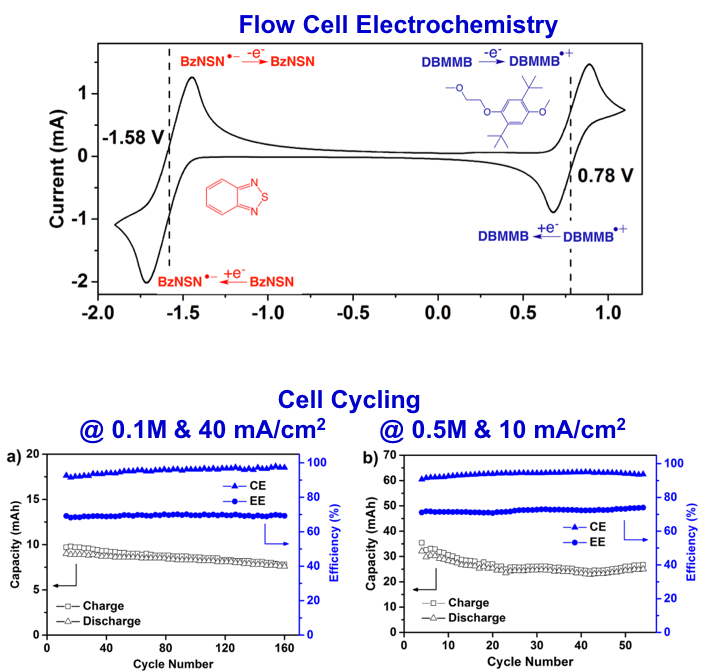
Scientific Achievement
2,1,3-benzothiadiazole (BzNSN) was identified as a promising anolyte molecule for non-aqueous organic redox flow batteries. A proof-of-principle 2.36 V nonaqueous organic flow battery was developed by coupling BzNSN with DBMMB. Relatively stable performances over extended cycling were demonstrated under tested flow cell conditions, i.e., at relevant redox concentrations (0.1 M and 0.5 M) and operational currents (up to 60 mA cm-2).
Significance and Impact
- Performances achieved in the BzNSN/DBMMB system greatly exceed ones observed in other reported systems of this kind. This is a significant step toward the implementation of practically feasible nonaqueous flow batteries.
Research Details
- BzNSN was tested by using cyclic voltammetry, hydrodynamic voltammetry, bulk electrolysis, and real flow cell configurations.
- Test conditions were tuned to optimize performances of the BzNSN/DBMMB flow cells.
Work performed at Pacific Northwest National Laboratory (JCESR partner) and Argonne National Laboratory (JCESR managing partner) by Duan, W.; Huang, J.; Kowalski, J. A.; Shkrob, I. A.; Vijayakumar, M.; Walter, E.; Pan, B.; Yang, Z.; Milshtein, J. D.; Li, B., ACS Energy Lett 2017, 1156-1161.

